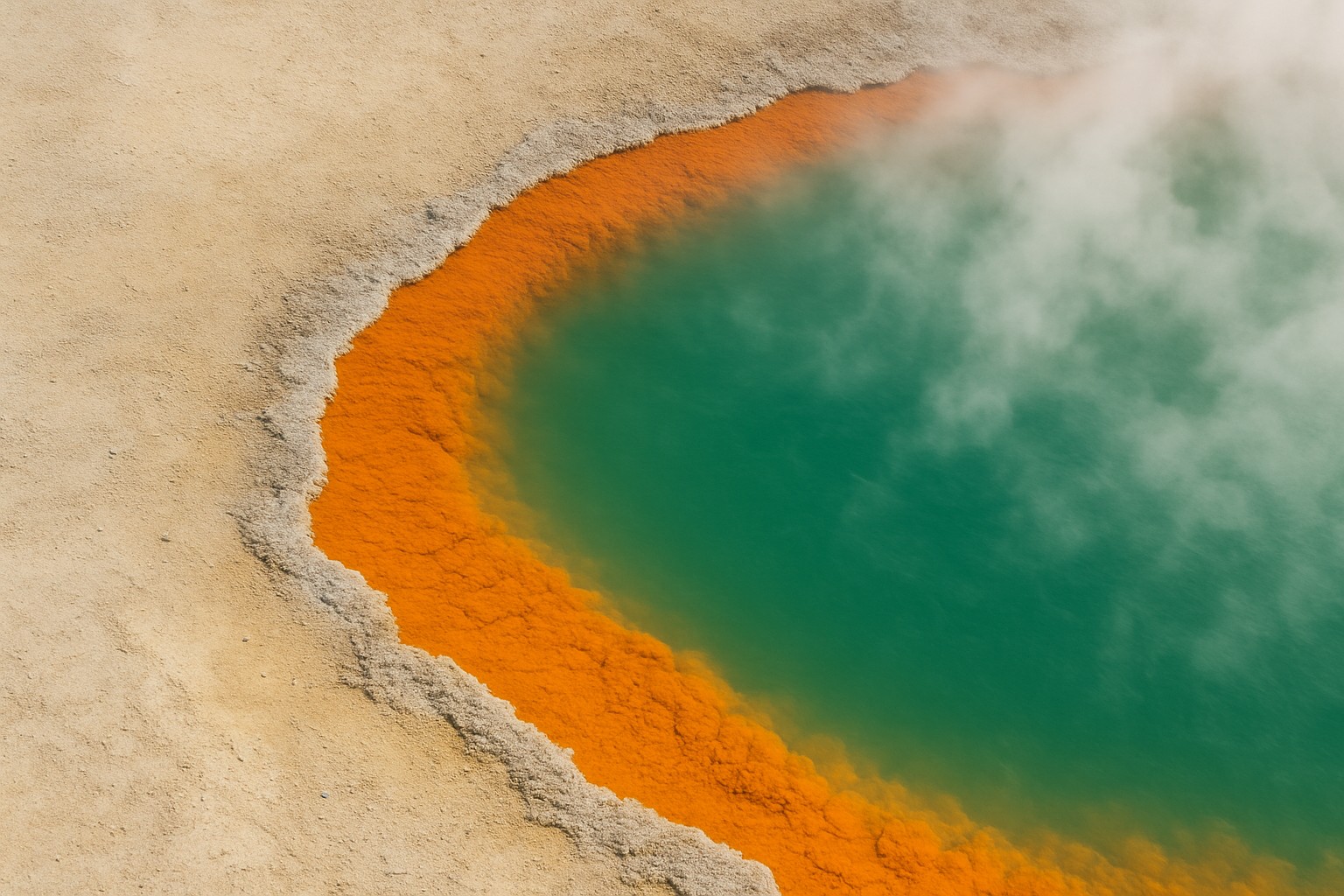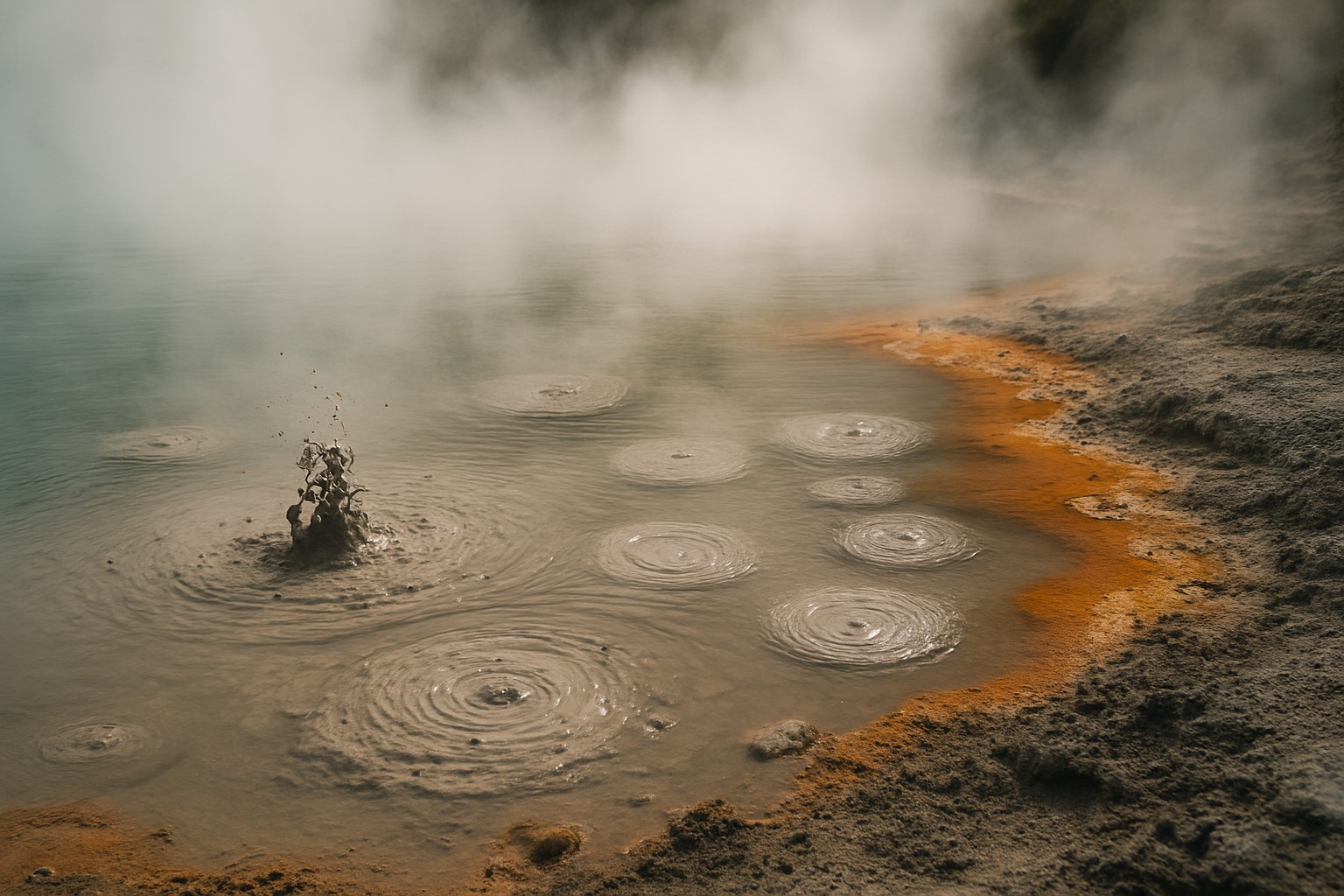Wai-O-Tapu: A Surreal Palette of Colors
Wai-O-Tapu Thermal Wonderland stands as the crown jewel of Rotorua's geothermal attractions. The park's name means "Sacred Waters" in Māori, and stepping into this landscape feels like entering an alien world painted by nature's most vivid brush.
The iconic Champagne Pool captivates visitors with its brilliant orange rim—created by antimony and arsenic sulfides—contrasting against the turquoise water. At 65 meters in diameter and 62 meters deep, this massive hot spring maintains a temperature of 74°C. The Artist's Palette terraces display nature's full spectrum, while the Devil's Bath shocks with its neon-green hue, colored by sulphur and ferrous salts.
Walking the self-guided trails takes about 90 minutes, with each turn revealing new geological wonders. The daily Lady Knox Geyser erupts at 10:15 AM, shooting water up to 20 meters high in a spectacular display of geothermal power.

Te Puia: Where Culture Meets Geothermal Power
Te Puia offers a unique combination: witness the mighty Pohutu Geyser while experiencing authentic Māori culture. Located in the Whakarewarewa Thermal Valley, this is where earth's raw power intersects with centuries of indigenous heritage.
Pohutu—meaning "constant splashing" in Māori—erupts up to 30 meters high, sometimes reaching 20 times per day. The geyser has been active for over 200 years, and watching its powerful eruption is mesmerizing. Steam rises from over 500 geothermal features throughout the valley, creating an ever-changing landscape of mist and mineral deposits.
Beyond the geothermal wonders, Te Puia houses the New Zealand Māori Arts and Crafts Institute, where you can watch master carvers and weavers at work, preserving traditional skills passed down through generations. The Kiwi conservation center provides rare opportunities to see New Zealand's national bird.

Hell's Gate: Rotorua's Most Intense Geothermal Experience
Hell's Gate earns its dramatic name. This is Rotorua's most active geothermal reserve, where mud boils violently, sulphur lakes bubble, and the earth seems angry. George Bernard Shaw named it during his 1934 visit, declaring it a sight "Dante would have been proud to claim."
The Kakahi Falls—New Zealand's largest hot waterfall—cascades down 40 meters at a temperature perfect for bathing. Violent mud pools spit and gurgle, their thick consistency belying the intense heat beneath. The sulphur lake steams ominously, its acidic waters inhospitable to all life.
After walking the thermal trails, visitors can experience the therapeutic volcanic mud bath—a unique spa treatment where you coat yourself in warm mud before washing off in sulphur spa pools. The minerals are said to have healing properties for skin and muscles.
Waimangu Volcanic Valley: The World's Youngest Geothermal System
Waimangu Volcanic Valley was born from catastrophe. The massive 1886 eruption of Mount Tarawera tore open the earth, creating this remarkable valley in a single night. As the world's youngest geothermal system, it offers a unique window into how such landscapes form.
Frying Pan Lake claims the title of the world's largest hot spring, covering 38,000 square meters and heated to 50-60°C throughout its depth. Inferno Crater Lake mesmerizes with its vivid blue color, its water level rising and falling in a mysterious 38-day cycle.
The valley walk descends through native bush and past silica terraces, offering spectacular views of Lake Rotomahana. This is a more serene geothermal experience compared to other parks, with emphasis on volcanic ecology and how life returns after such dramatic geological events.